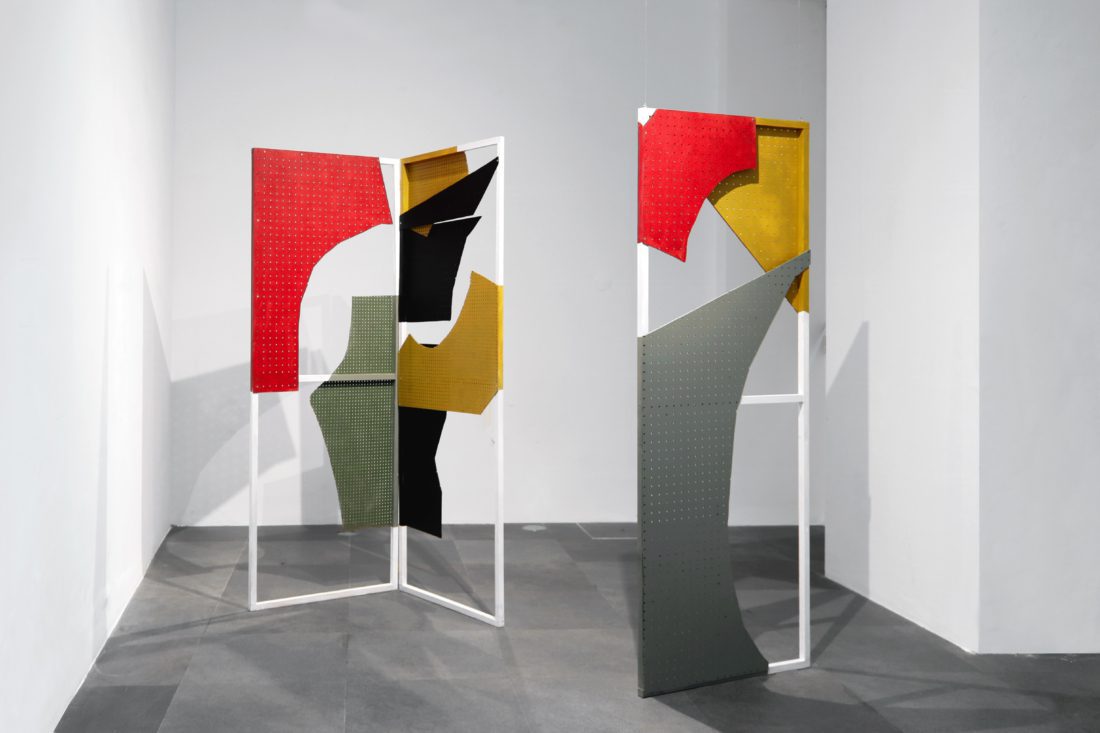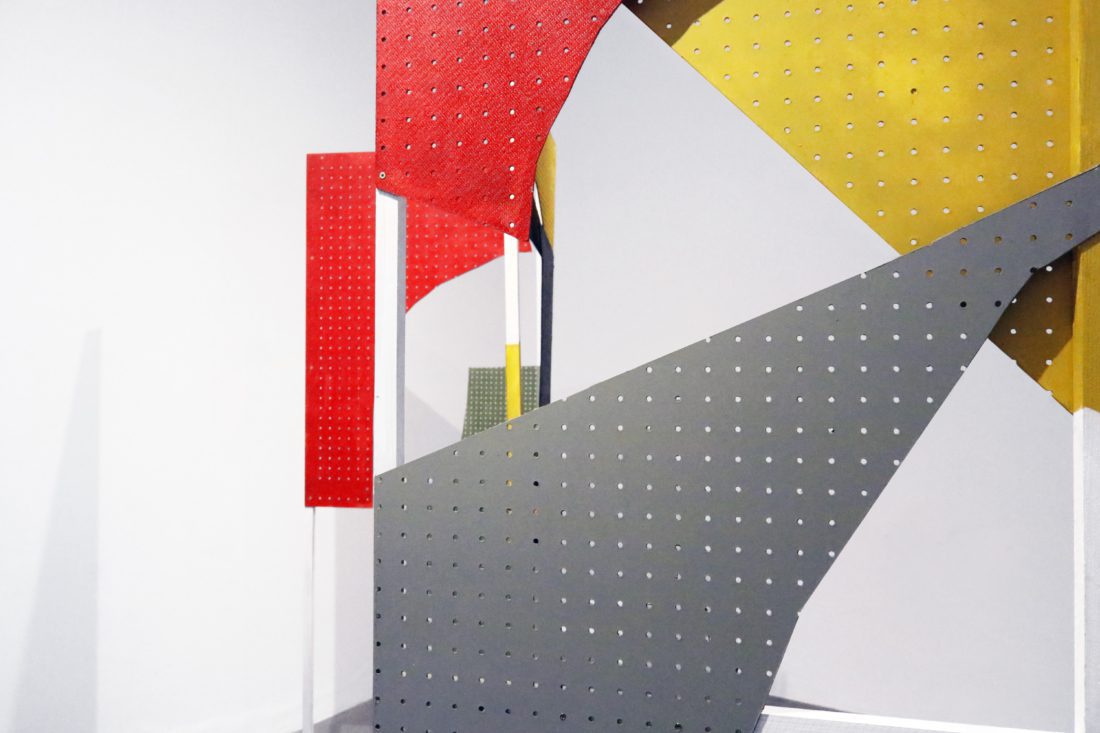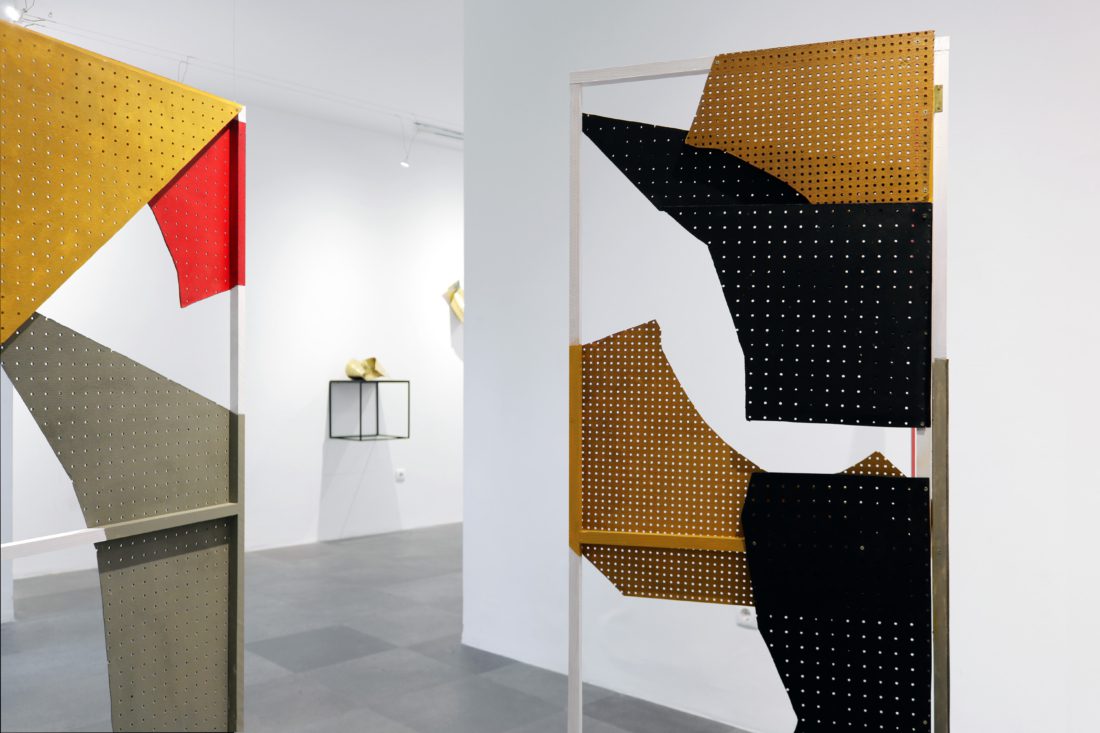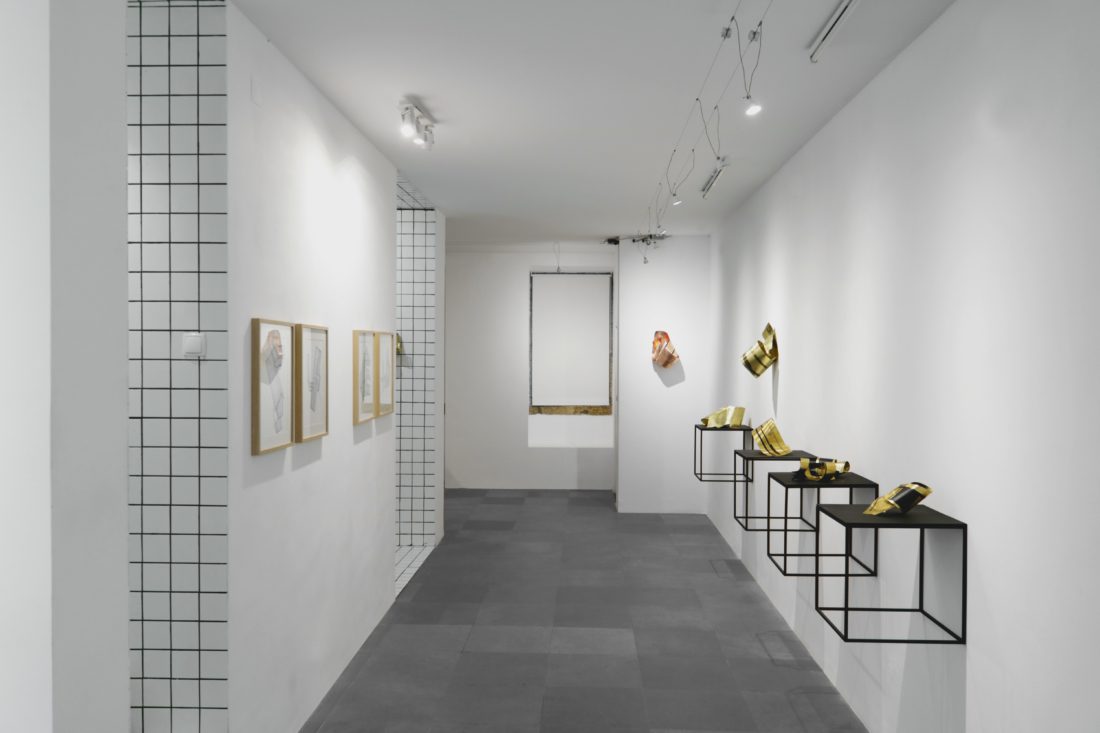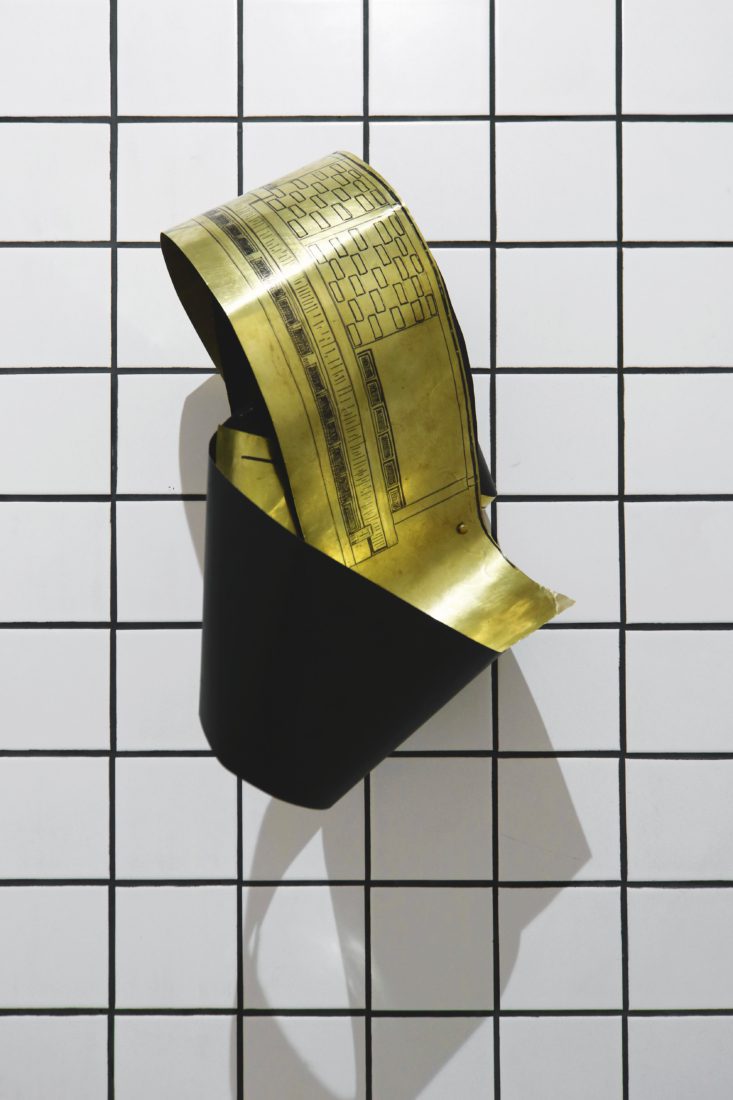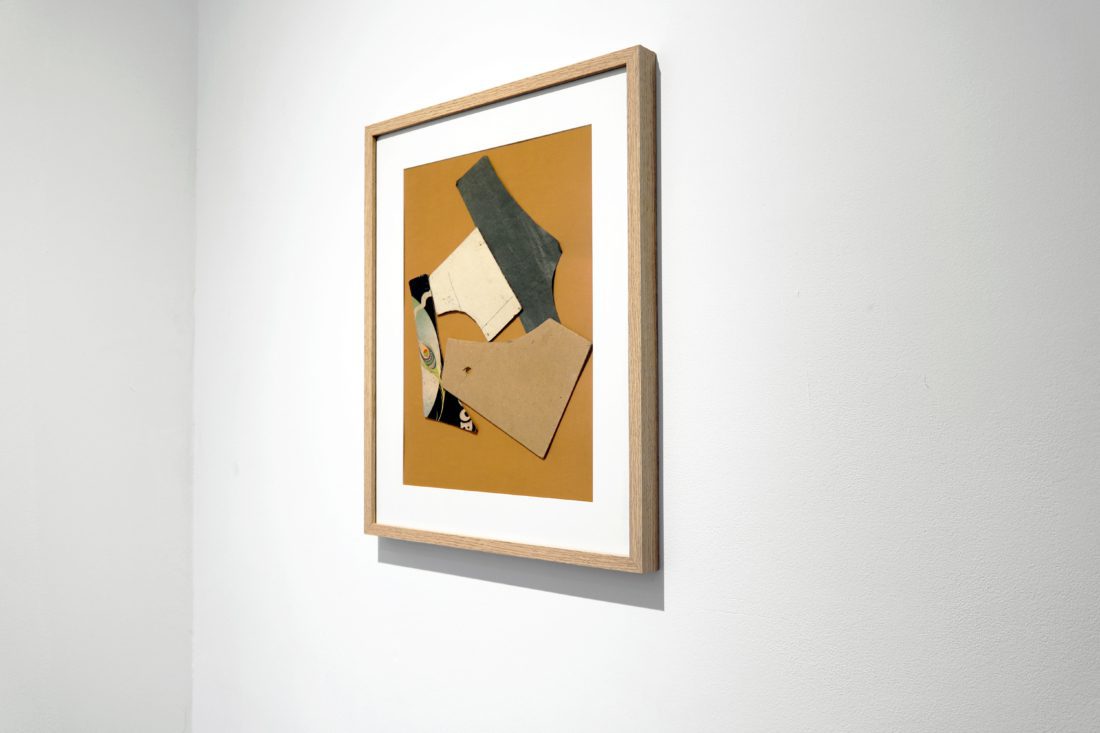Tracings
Henrique Neves
[09/11/18 - 22/11/18]
Tracings (Traças e Traços) is conceived from a number of artefacts and investigates memory, the archive, power relationships, spaces, patterns, and personal narrative. Two years ago, I took possession of ozalid copies of the architectural plans of my primary school, which had belonged to my grandfather who was responsible for its construction. More recently, I was given templates/patterns of shirt-cuffs and collars used by his mother, who worked as a seamstress.
These plans and patterns became motifs with which to trace ideologies and relationships regarding gender and power in the practices of architecture and sewing. These gender dynamics have also been apparent in my own family history; traditionally, the men worked in construction and architecture, while the women were seamstresses or decorators. More recently, this has been subverted/complicated by the architectural work of my late sister and the use of textiles in my own art practice.
The tracing of these artefacts transforms them into playful objects that act as material explorations of my relations with the past, my personal/family histories, to the objects’ forms, and to their ghosts that, moth-like, eat away at them, giving birth to something new.*
The pieces presented are metal objects generated from the architectural plans combined with the seamstresses’ templates, a skeletal brise-soleil, a textual brise-soleil on a memory of my emotional awakening at primary school, and mobile screens constructed from curvilinear forms that separate spaces and reference both decoration and architecture. As in most of my work, the materials are ordinary and accessible – wood, paper, copper, brass – and resonate with the original practices and objects, while questioning resilience and time by being more fragile, imperfect and uncertain.
*In Portuguese, traça means moth, a drawing of a building, and the action of tracing.
